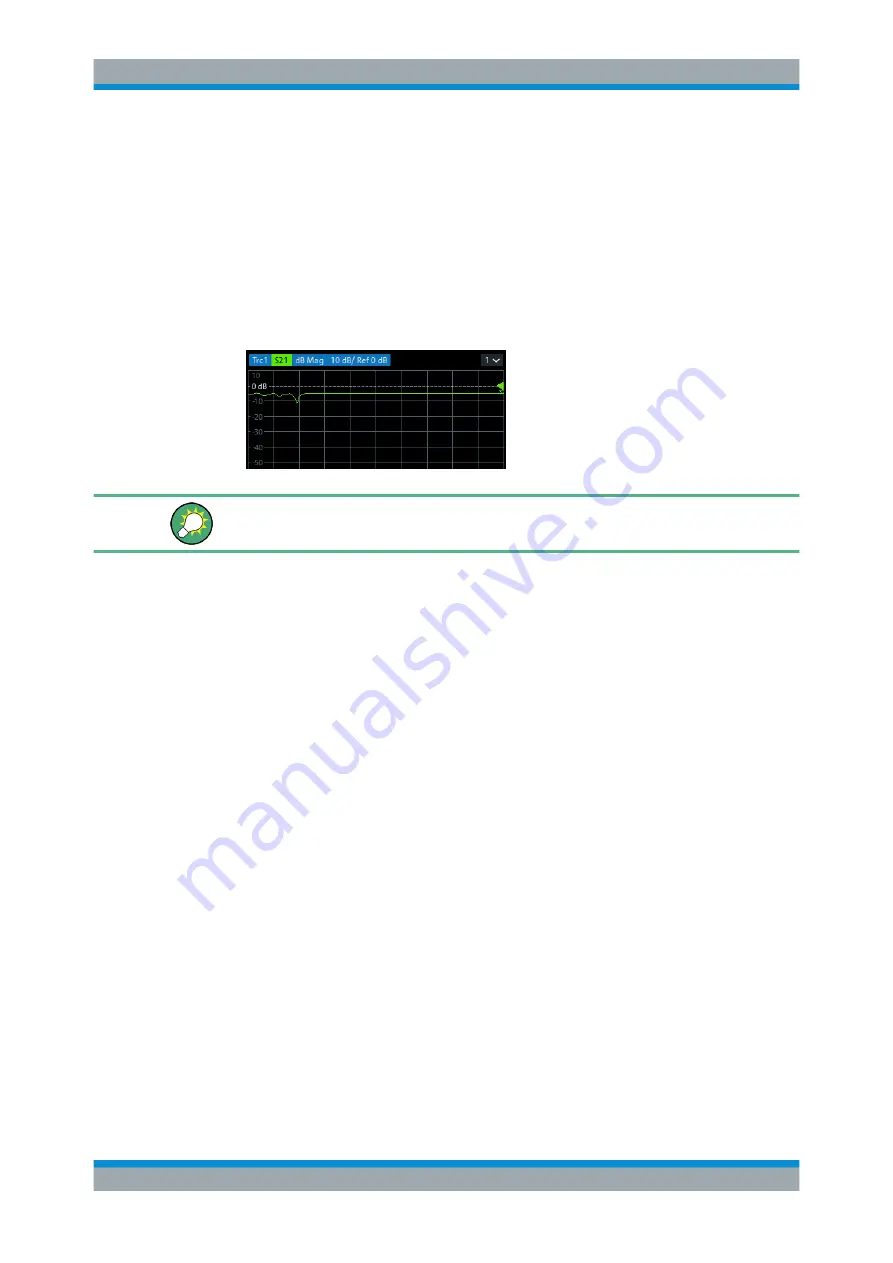
Getting Started
R&S
®
ZNB/ZNBT
73
User Manual 1173.9163.02 ─ 53
1. Connect the DUT between test ports 1 and 2 of the network analyzer as shown
above.
2. Switch on the instrument and start the VNA application.
Proceed as described in
Chapter 4.1.7, "Starting the Analyzer and Shutting Down"
3. Use the [PRESET] key to restore a well-defined instrument state.
The analyzer is now set to its default state. The default measured quantity is the
transmission S-parameter S
21
.
Select TRACE – [TRACE
CONFIG] and use the control elements in the "Traces" soft-
tool tab if you wish to create additional traces and diagrams.
4.4.1.2
Selecting the Sweep Range and Other Parameters
After a system preset the display shows a diagram with a dB magnitude scale, and the
S-parameter S
21
is selected as a measured quantity. This S-parameter is the forward
transmission coefficient of the DUT. It is defined as the ratio of the transmitted wave at
the DUT's output port (port no. 2) to the incident wave at the DUT's input port (port no.
1).
The R&S
ZNB/ZNBT automatically adjusts its internal source and receiver to the
selected measured quantities: For an S
21
measurement, a stimulus signal (termed a
1
)
is transmitted at the analyzer port no. 1; the transmitted wave (termed b
2
) is measured
at port 2. The stimulus signal from the analyzer port no. 2 is not needed except for
some calibration types.
By default the sweep range is set to the frequency range of the analyzer, which can be
unsuitable for your DUT. The following procedure shows you how to configure a
smaller sweep range.
1. Select STIMULUS – [START] and set the "Start Frequency" to the lowest fre-
quency you want to measure (e.g. 1.77 GHz). For convenient numeric entry, open
the "Numeric Editor" (see
Chapter 4.3.5.2, "Using the Numeric Editor"
Tip:
If you use the DATA ENTRY keys at the front panel for data entry (R&S
ZNB
only), type [1][.][7][7] and terminate the entry with the [G/n] key.
Refer to
Chapter 4.3.5, "Entering Data"
on page 62 to learn more about entering
numeric values and characters.
Performing Measurements






























